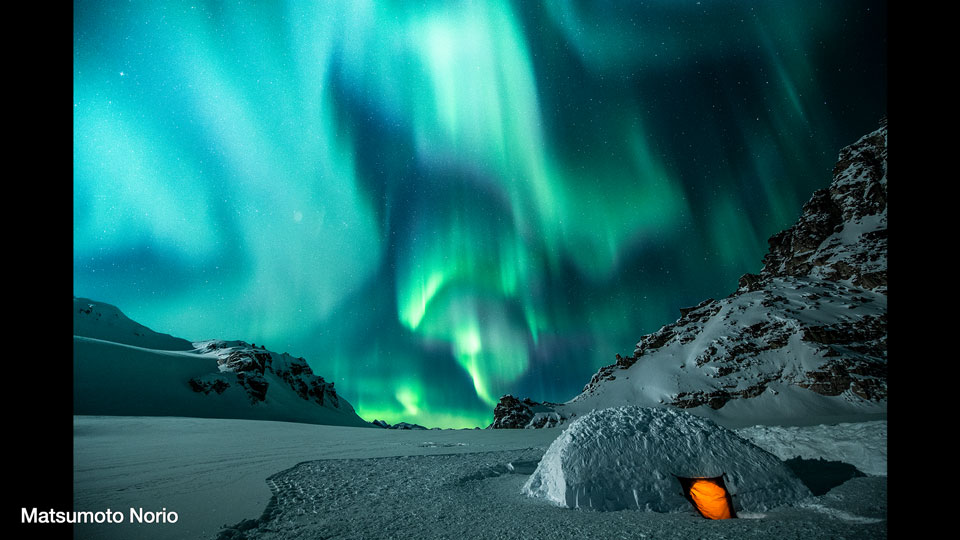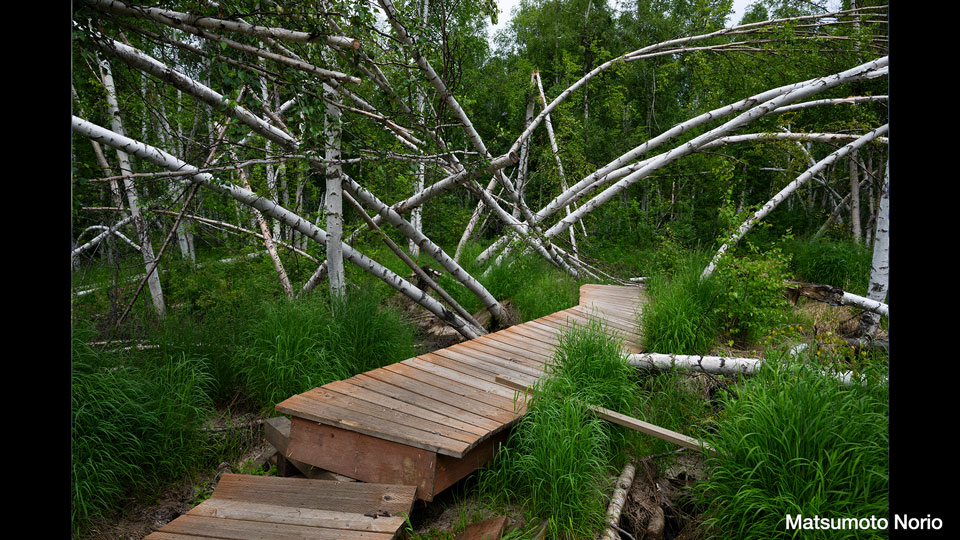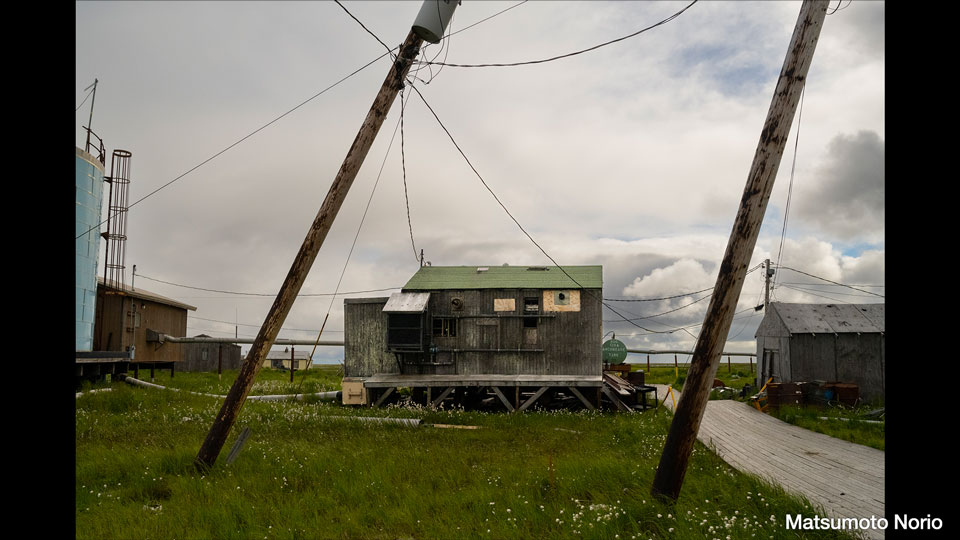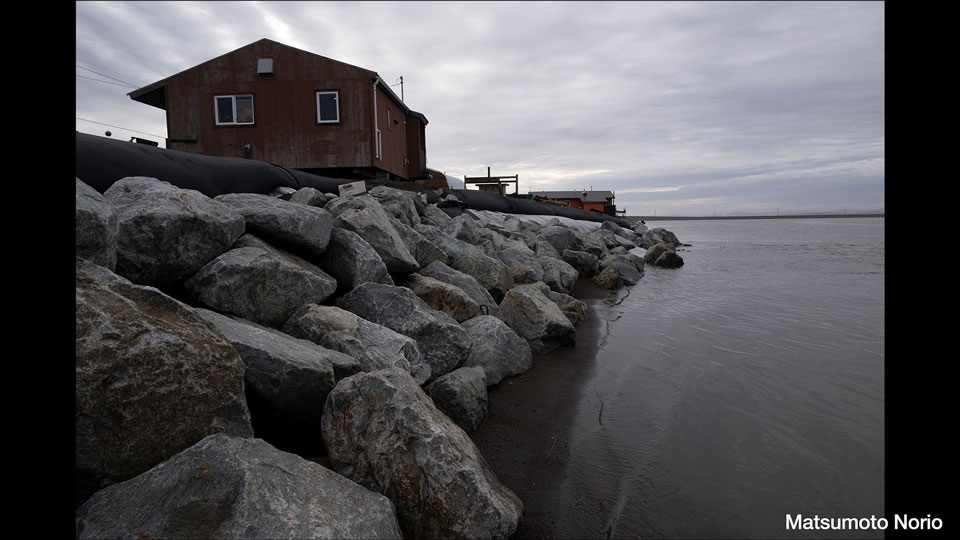Enchanting world
Matsumoto is known throughout the photographic world for his dedication to his craft. He spends six months of every year—the summer and winter—in Alaska, venturing out to some of the most remote parts of the state and camping there alone in a quest to capture images the world would otherwise not see. His photographs have featured in Japanese school textbooks, and received widespread recognition in international media.

They include breathtaking images of migrating caribou, close-up shots of humpback whales and polar bears, striking pictures of arctic glaciers, and photos of the dazzling aurora borealis.



Shifting focus
In recent years, however, Matsumoto has changed his focus. Initially, he was reluctant to make climate change a theme of his work.
"When I'm in Japan, I live in a city, drive a car, and fly," he says. "I also use household appliances. I'm a contributor to global warming. So I felt like I wasn't really entitled to speak up about it.
"But things are changing so fast in Alaska that I can't afford to stay silent. If we don't do something about it, the entire planet will be in serious trouble, and that's why I decided to start showing these scenes to the world."

Research shows that warming is occurring in and around Alaska three times faster than in other parts of the world. The alarming finding has added a sense of urgency to Matsumoto's mission.
"When I first came to Alaska, I hadn't even heard of global warming," Matsumoto says. "But then gradually I began to see its effects, and now it doesn't matter where I look—there's nothing that hasn't been affected by it.
"One example: I've been photographing humpback whales for a long time, and one summer they simply didn't show up. I remember being shocked at how off-kilter Alaska's nature environment had become."

A crumbling world
Last summer, Matsumoto visited Fairbanks, Alaska's second-largest city. Due to permafrost melt, the roads had warped. Beyond the city, the phenomenon had loosened the ground in forests, uprooting trees.


The rapidly transforming climate has also caused major wildfires. One blaze in 2022 destroyed an expanse of forest six times the size of Tokyo.

In the state capital, Juneau, runoff from melting glaciers has flooded the Mendenhall River, eroding its banks and causing buildings to collapse into the water.

Threat to indigenous communities
The landscape is changing so drastically that in some cases, whole villages have been forced to rapidly relocate.
In Newtok, a village formerly home to an indigenous community of around 200 people, the melting permafrost has caused the land to subside to such a degree that it is now water-logged and unstable. Neighborhoods where houses once stood are submerged. Power poles lean precariously, and the ground sinks underfoot.

One of the few remaining residents, Jonah, points to house foundations covered by water. "There were four houses here before," he says. "Now only the foundations are left."


The warming climate also poses an existential threat to Kivalina, a low-lying village that sits on Alaska's west coast roughly 130 kilometers above the Arctic circle. The indigenous population here has traditionally made clothes from seal pelt and wolf skin. But the rapidly thinning sea ice has devastated seal populations. When Matsumoto accompanied locals on a recent hunt, the group returned home empty-handed.


Seawalls have failed to mitigate the impact of coastal erosion, and the residents are now under pressure to relocate.

An assessment by US army engineers in 2013 forecast that by next year, Kivalina would be uninhabitable—swallowed up by rising seas.
"There will be chaos when that happens," says Janet Mitchell, a resident who has lived in the village all her life. "The chaos has already begun."

"I want people to understand what's happening here, what we're facing. People should be aware of this issue. It's not something we've caused. Even though we don't pollute the Earth like the big cities do, we're still affected."
For Matsumoto, the inherent tension in his work is difficult to reconcile. He's still in awe of the abundant natural beauty of the world he photographs, a place that he calls "a treasure of Earth," but he also recognizes that it is fast disappearing and time is running out to save it.



